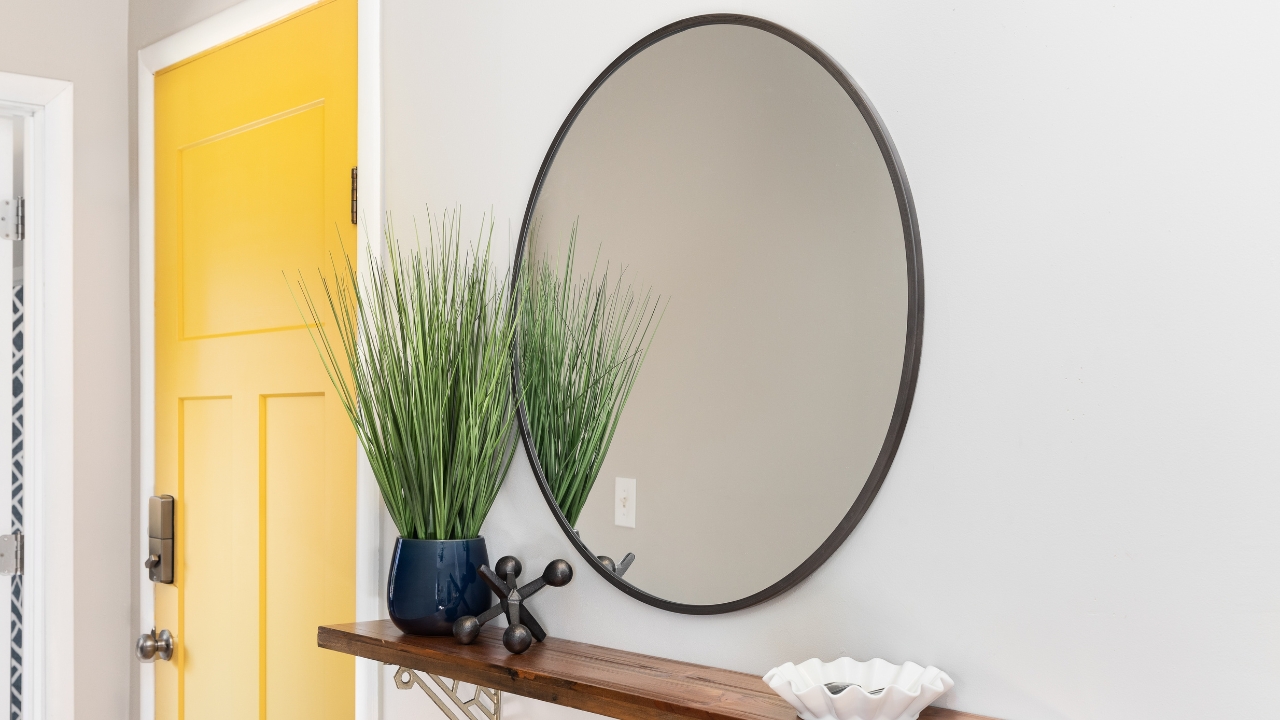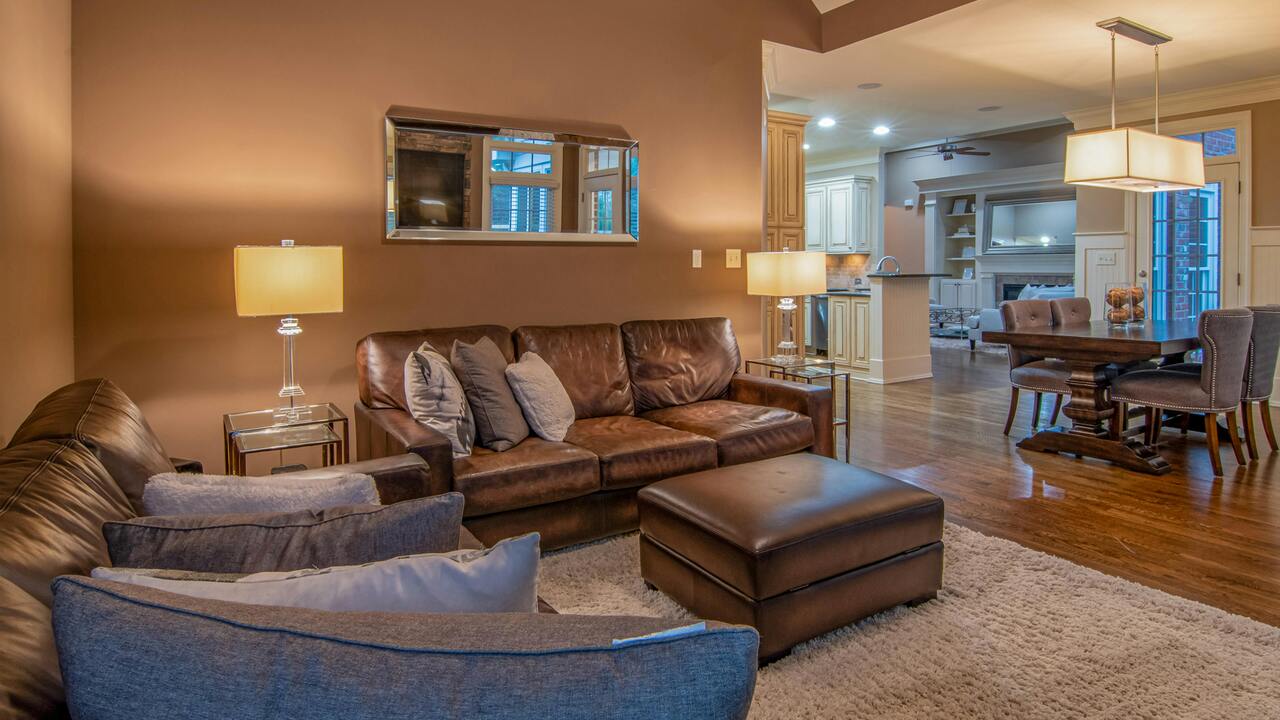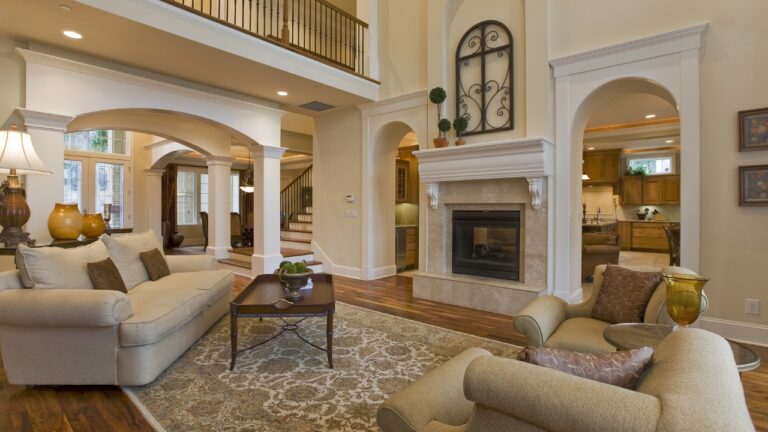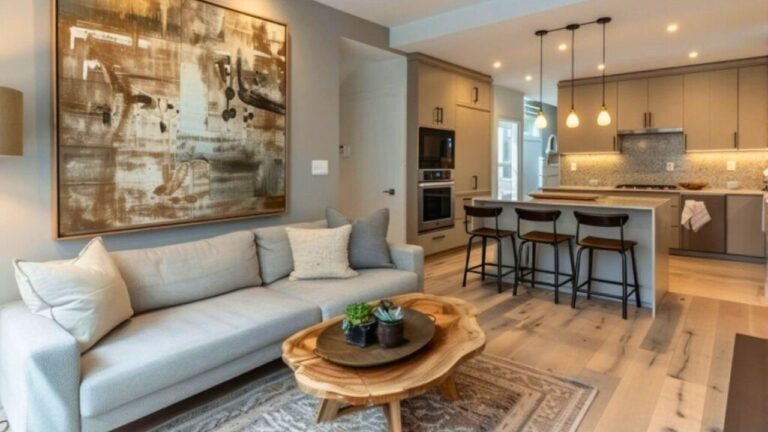How to make every room feel like it belongs in the same house
Cohesion isn’t about making every room match. It’s about repeating a few choices—colors, metals, shapes—so your house feels like one story as you move through it. When rooms relate, your brain relaxes. That’s the “finished home” feeling you’re chasing.
You can build it with what you have in a weekend.
Choose a house palette and commit
Pick one white or soft neutral for trim and ceilings, one wall color family you like to live with, and two accents you’re happy to repeat. Carry those accents in pillows, art, and throws. The sofa can change, but the palette keeps the rhythm. Green + camel + black is an easy starting point that works across seasons.
Use the same trim color everywhere so doors and casing tie rooms together.
Standardize metals where you can
If public spaces are black metal and brass, keep that language in lighting, frames, and hardware. You don’t need to replace everything at once. Start with lights and cabinet pulls, then mirror frames and rods. When metals repeat, rooms handshake at the thresholds instead of arguing.
Match sheen, too—satin with satin, matte with matte.
Repeat a shape on purpose

Round coffee table, round mirror, round lamp bases—your brain loves an echo. Or go linear with rectangles and simple cylinders. This small, nerdy move is why designer homes feel composed even with mixed furniture. Shapes carry the throughline when colors shift slightly room to room.
If you have a lot of straight lines, add one large round mirror in the hallway. It’s a bridge piece.
Use runners and art to connect sightlines
Hall runners that pick up a color from adjoining rooms act like stitches. The same goes for art that shares a palette. If the living room has a landscape with deep greens, hang a smaller print with the same tone in the next space. You’re not duplicating; you’re nodding.
Keep frames consistent so the art changes while the structure stays the same.
Keep thresholds clean
Where flooring changes, use simple transitions and avoid three materials meeting at once. A thrifted bench or console at a doorway gives you a landing spot and visually slows the room change so it feels intentional. Doorways are where cohesion gets won or lost.
Paint doors and trims the same sheen throughout. It’s a quiet but powerful unifier.
Standardize lighting temperature

Mixing bulb temperatures makes rooms feel disjointed. Warm white (2700–3000K) in all main spaces keeps evening light consistent and flattering. Your wall colors and floors will look the same from room to room, which is half the visual battle.
Add dimmers in living and dining so mood changes without breaking consistency.
Edit the outlier room
If one room never feels like it belongs, it’s probably fighting the house palette. Remove the loudest color, swap two frames, and bring in one textile from the main areas. You’ll feel the shift immediately. Consistency is usually three decisions away, not a gut job.
If you love the outlier, let it be the exception—but make the hallway that leads to it echo the main story.
Cohesion is repetition, not sameness. A shared palette, matching metals and shapes, stitched sightlines, clean thresholds, and consistent light make your home feel connected even as each room does its own job.
Like Fix It Homestead’s content? Be sure to follow us.
Here’s more from us:
10 things that make your house feel less welcoming without saying a word
10 Upgrades That Make Your House Look Fancier Than Your Neighbor’s
*This article was developed with AI-powered tools and has been carefully reviewed by our editors.







